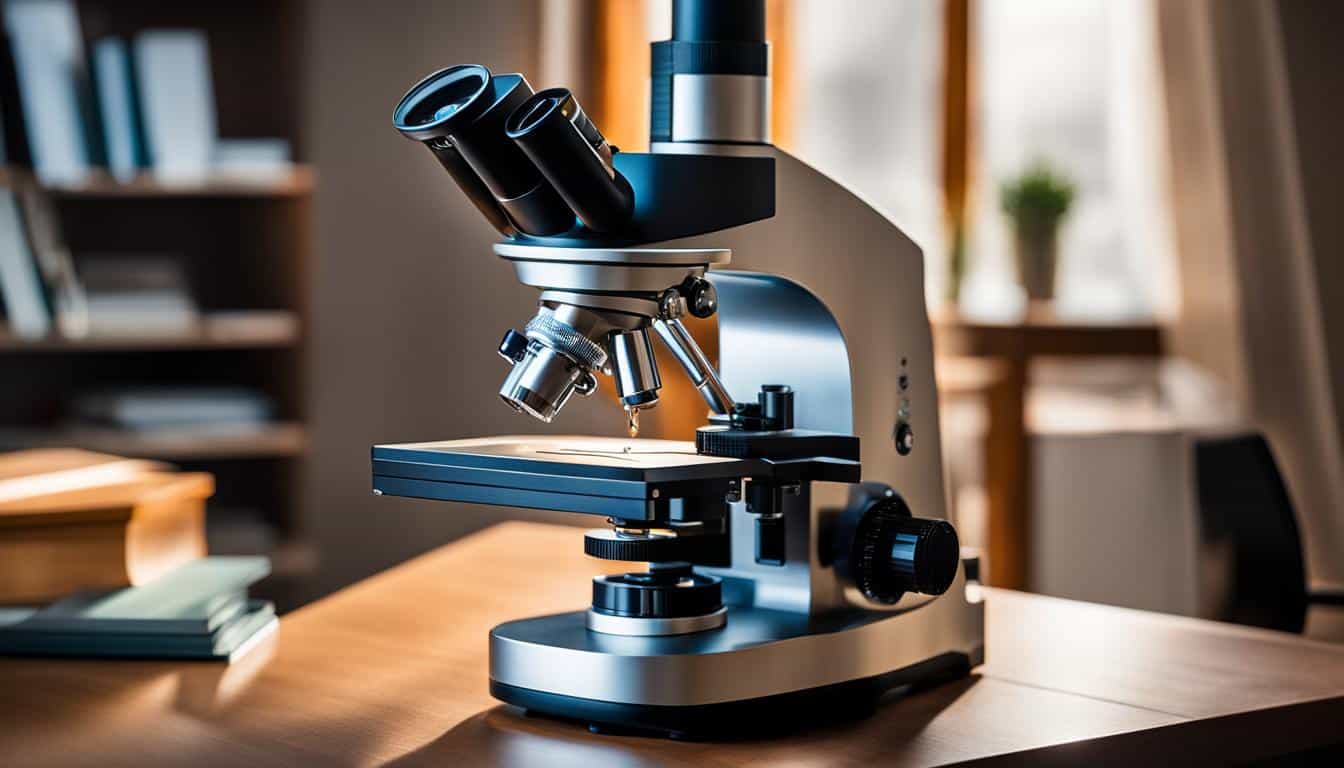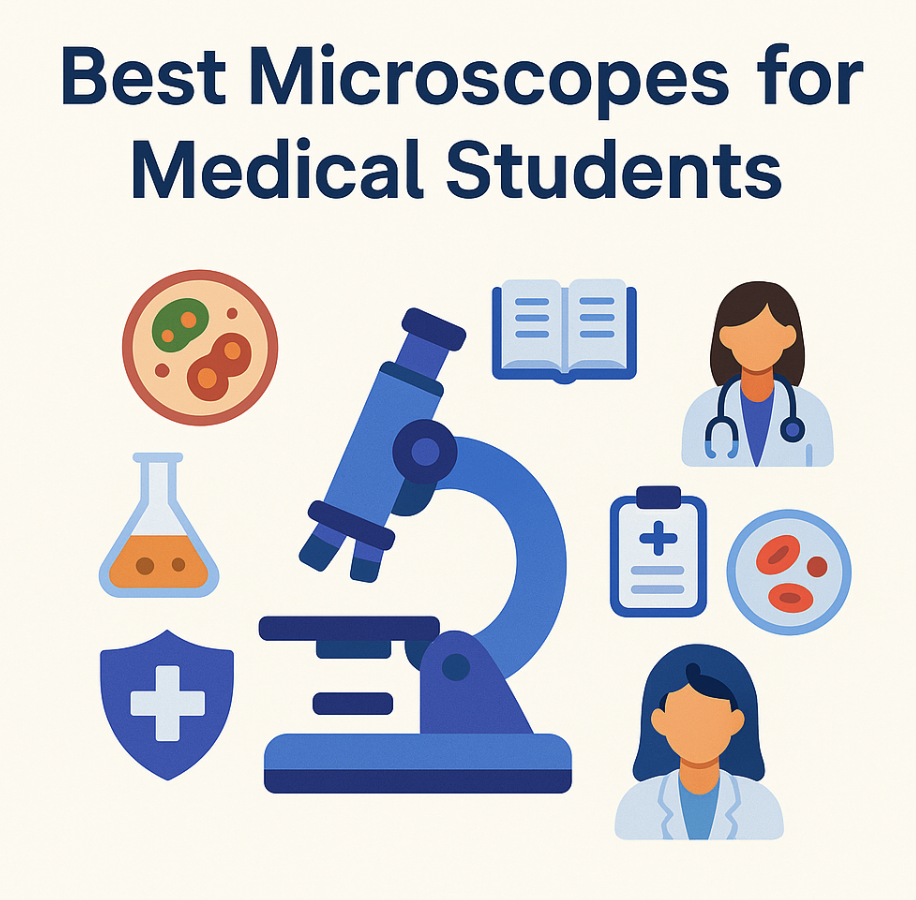
Whether you’re a curious hobbyist, a student, or a budding scientist, having the right microscope for home use can open up a whole new realm of discovery. Compound, digital, stereo, and pocket or handheld are the 4 types of microscopes commonly used for home.
In this guide, we’ll explore a list of microscopes suitable for home use – highlighting their key features, capabilities, and the types of samples they are best suited for.
In a Nutshell
- Compound microscopes provide high magnification and are suitable for a wide range of applications.
- Digital microscopes connect to a computer and allow you to view and capture magnified images.
- Stereo microscopes are ideal for providing a detailed look at larger objects already visible to the naked eye.
- Pocket or handheld microscopes are portable and great for on-the-go science exploration.
These microscopes can be used for home science experiments, educational purposes, and personal hobbyist projects.
Choosing the Right Microscope for Your Needs
When choosing a microscope for home use, it’s essential to find one that suits your specific requirements and budget. A wide range of options are available on the market, catering to different levels of expertise and applications. If affordability is a concern, there are plenty of options for affordable home microscopes that offer excellent functionality.
These inexpensive microscopes provide good value for money without compromising on quality. They are ideal for beginners or those interested in microscopy as a hobby. If you are looking for a microscope that can be used for many purposes, some models allow for adjustable magnification and can be used for many applications. Versatility is a key feature to look for as it allows you to adapt the microscope to suit your specific needs and interests.

Home Microscope – What to Look For?
If you are new to microscopy, I would recommend getting one that is user-friendly and easy to operate. Beginner home microscopes often come with educational resources and guides to help you get started. These microscopes are designed to provide a smooth learning experience, allowing beginners to explore the microscopic world.
Key Factors |
Benefits |
|---|---|
| Affordable | Budget-friendly, will not break the bank |
| Beginner Friendly | User-friendly, educational resources |
| Portable | Compact, easy to carry |
| Versatile | Adjustable magnification, versatile applications |
When selecting a microscope for home use, it’s important to consider a few of the above factors such as affordability, ease of use, and versatility.
Top Picks for Microscopes for Home Use
For those looking to explore the microscopic world at home, I have listed several high-quality and budget-friendly microscope options worth considering. Whether you’re a beginner looking for a microscope kit or an experienced hobbyist seeking a compact and versatile microscope, there’s something for everyone.
Here are some recommended options:
Affordable Home Microscopes
These microscopes offer a range of features and magnifications suitable for various applications, such as observing coins, stamps, and other small objects, as well as microbiological observation and educational purposes.
Microscope Model |
Key Features |
Price Range |
| Carson MicroBrite Plus 60x-120x LED Lighted Pocket Microscope | – Portable handheld microscope for adults and students – LED light for enhanced viewing – Compatible with microscope slides and specimens |
$14.99 |
| Elikliv Microscope, LCD Digital Coin Microscope 1000x | – LCD digital microscope with 8 adjustable LED lights – PC view compatible with Windows, EDM4, and MacOS – Ideal for observing coins, stamps, and other small objects |
$33.77 |
| BEBANG Compound Microscope with Microscope Slides | – 100X-2000X magnification – Includes microscope slides for various samples – Suitable for students and beginners |
$99.99 |
| Wireless Digital Microscope, Skybasic 50X-1000X Magnification | – WiFi portable handheld microscope with adjustable stand – HD USB microscope camera compatible with iPhone, iPad, Samsung Galaxy, Android, Mac, and Windows computers – Ideal for educational and scientific purposes |
$39.99 |
| Pocket Microscope, 60x-120x Handheld Mini Microscope | – Portable handheld microscope for kids and adults – Includes 5 microscope slides for specimens – Ideal for microbiological observation and educational purposes |
$19.98 |
Microscopes for Kids [6 to 12 Years]
Microscope Model |
Key Features |
Price Range |
| Omano JuniorScope Microscope for Kids | – 3 magnification levels: 40x, 100x, 400x – Dual power settings – Includes experiment set and accessories – Battery or AC power |
$89.00 – $130.00 |
| Educational Insights GeoSafari Jr. Talking Microscope | – Interactive toy with facts about plants and animals – Vibrant design for kids aged 3+ – Includes color digital USB2.0 eyepiece camera |
Check Price |
| AmScope Beginner Microscope STEM Kit | – Magnification: 120x-1200x – Age Range: 8+ – LED light source – Includes 52-piece accessory kit |
Check Price |
The above are just a few examples of the top picks for microscopes for home use. Whether you’re looking for an affordable option, a microscope for kids, or a more advanced model, there’s a microscope out there to suit your needs.
Exploring the Microscopic World at Home
Having a microscope at home opens up opportunities for science exploration and learning. Even if you’re conducting home science experiments, homeschooling, or working on DIY projects, a microscope can be a valuable tool for observing and analyzing the microscopic world.
Kid-Friendly Microscopes
Kid-friendly microscopes are designed specifically for young learners, with features that make science fun and accessible. These microscopes often come with colorful designs, easy-to-use controls, and built-in lighting to enhance the viewing experience. They are a great way to introduce children to the wonders of microscopy and encourage their curiosity in the natural world.
Entry-Level Microscopes
If you’re new to microscopy or looking for a microscope that is easy to use, an entry-level microscope is a perfect choice. These microscopes are designed with simplicity in mind, allowing beginners to explore the microscopic world with ease. They often offer adjustable magnification settings, sturdy construction, and user-friendly features that make them suitable for home use.
With the right microscope, you can unlock the hidden world of the microscopic and gain a deeper understanding of the natural world around you.
Essential Accessories for Home Microscopes

Having the right features and accessories can greatly enhance your experience and make your exploration of the microscopic world more fruitful.
Here are some essential items to consider:
Microscope Slides and Cover Slips
Microscope slides and cover slips are essential tools for preparing and observing specimens on a microscope. Slides provide a flat surface for mounting specimens, while cover slips help protect the specimen and prevent it from drying out. Slides ensure specimens are properly positioned and can be easily examined under the microscope.
Smartphone Camera Adapter
A smartphone camera adapter allows you to capture and share images of the microscopic world easily. By attaching it to a smartphone, you can take high-resolution photos and videos of your findings.
This allows you to document your observations and makes it convenient to share your discoveries with others or use them for educational purposes.
Microscope Immersion Oil and Lens Paper
It is important to have microscope immersion oil and lens paper for higher magnification observations. Immersion oil is used to enhance the numerical aperture of the objective lens, resulting in improved image quality, especially when viewing bacteria or other transparent specimens.
Lens paper helps clean and maintain the lenses, ensuring clear and sharp images during your microscopy sessions.
Sample Collection Tools
Sample collection tools such as transfer pipettes and Eppendorf tubes are useful for collecting and preparing samples for microscope observation. These tools allow you to safely collect and transfer specimens to the microscope slides for further study and research.
Recommended Microscope for Home Use
The Home LED Microscope from Home Science Tools is an excellent choice for students, science enthusiasts, and hobbyists looking for an affordable yet high-quality home microscope. At a price range of $100-$150, the Home LED Microscope offers excellent value and performance for home use. Its simple yet effective design makes it a great introductory microscope for students and hobbyists to explore the microscopic world.
This microscope features easy-to-use controls and sturdy construction, allowing observers to see intricate cell details and other microscopic wonders.
Key features of the Home LED Microscope:
- Magnification range of 40x-400x, providing detailed views of small specimens
- LED illumination for bright, clear images
- Sturdy metal frame and base for stability
- Coarse and fine focus knobs for precise adjustments
- Includes prepared slides and tools for creating your slides
- Backed by a lifetime guarantee from Home Science Tools
So, if you’re ready to delve into the microscopic world, consider investing in a microscope for home use. Whether you choose a compound microscope for high magnification, a digital microscope for capturing images, or a portable microscope for on-the-go exploration, you’ll be amazed at the fascinating discoveries that await you.


